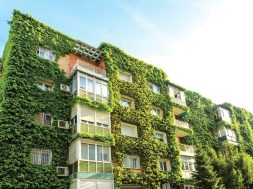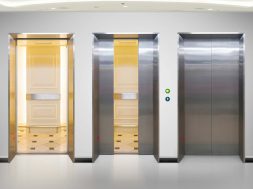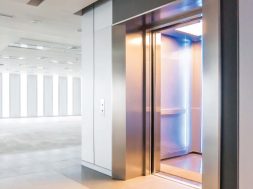Technology wonders architectural lighting

This feature takes a deep dive into the captivating realm of architectural lighting, exploring cutting-edge technologies, smart automation, design philosophies, energy efficiency, and emerging trends projected to dominate the field in 2024. As we progress into the future of architectural design, lighting will maintain its pivotal role in shaping our constructed environment. The fusion of technologies, smart automation, design philosophy, and a commitment to energy efficiency is reshaping the possibilities within lighting design.
The lighting industry has significantly transformed in recent years, propelled by technological advancements. LED Lighting Technology, in particular, stands out as a game-changer.
Designers and consultants are consistently thrilled by the frequent innovations in various light fixtures flooding the market. This efficient LED technology revolutionises lighting aesthetics and facilitates the seamless incorporation of innovative products into projects.
In terms of tools, software plays a crucial role. AutoCAD is utilised for plotting lighting layouts, Dialux Evo aids in 3D lux calculations, and Photoshop illustrates lighting effects on 3D views. Post-completion, lux meters measure actual lux levels, ensuring that the envisioned lighting design aligns with the practical illumination achieved.
Philip Rafael, Design Director of In’Sight, observes that the role of lighting design is in continuous evolution. Initially guided by the desire to merge the precision of engineering with the magic of art, today’s lighting designers have found a healthy middle ground, drawing knowledge from both disciplines. The profession is expanding further by incorporating elements from media, interactivity, IoT, AR (Augmented Reality), and AI (Artificial Intelligence). This dynamic evolution enhances the profession, pushing boundaries to create immersive, innovative, and technologically integrated lighting solutions that redefine the aesthetics and functionality of architectural spaces.
Shubhada Munde, Founder of Gaush Lighting Designs, underscores the pivotal role of light in human life and circadian rhythm. She highlights the necessity for artificial light planning that enhances human comfort, productivity, and overall well-being. As professional lighting design consultants, they aim to deliver sustainable solutions aligned with client and project requirements. They recognise lighting as an indispensable aspect of any indoor or outdoor project and provide effective lighting schemes.
Abhiram R, Managing Partner/Principal Lighting Designer of APTA Lighting Design Studio, elaborates that nature is an eternal muse for their studio. The intricate dance of light and shadow in natural settings informs their designs, creating spaces that evoke serenity and connection. The aesthetic inspiration extends beyond visual beauty, embracing the changing hues of the sky and translating them into lighting environments that mirror essential circadian rhythms.
Modern lighting design
Modern lighting design is undergoing a revolutionary shift, primarily driven by LED (Light Emitting Diode) and OLED (Organic Light Emitting Diode) technologies. These cutting-edge solutions have reshaped the aesthetic landscape and granted designers unparalleled flexibility and control. LED’s efficiency, extended lifespan, and diverse colour options make it a cornerstone in sustainable design practices.
Furthermore, with its thin and flexible form factor, OLED technology allows for creating seamlessly integrated lighting elements within architectural structures. The amalgamation of LED and OLED technologies results in lighting fixtures equipped with dynamic controls, sensors, and programmable features, becoming indispensable in prestigious projects. This sophistication enables personalised lighting experiences that adapt to the space’s and its occupants’ specific needs and moods.
Smart automation
Smart automation enhances user comfort and contributes to energy conservation by optimising lighting conditions based on occupancy and natural light levels. This harmonious integration of technology and design transforms spaces into responsive environments, catering to the needs of their inhabitants in real time.
Beyond the technical aspects, lighting design is an art form that shapes the ambience and character of a space. Renowned lighting designers approach each project with a unique philosophy, blending creativity with functionality. Some prioritise minimalism, using lighting as a subtle accent to highlight architectural features, while others embrace theatricality, creating immersive experiences through dramatic lighting installations.
Abhiram communicates that his company adheres to the “Form Follows Functionality” approach, placing functionality and purpose-driven illumination at the forefront of their designs. Beyond creating visually appealing spaces, their focus is on seamlessly integrating lighting solutions that cater to a space’s specific needs and functions. Their lighting philosophy centres on being Human-Centric and Socially Responsible, prioritising the well-being of individuals and the community. Designers are incorporating daylight harvesting and energy-efficient fixtures into their projects, harnessing natural light whenever possible. Additionally, integrating smart controls ensures that lights are active only when needed, contributing significantly to sustainability efforts and aligning with the global movement towards eco-friendly design practices.
As we peer into the future of architectural lighting design, several trends are poised to shape the landscape in 2024. Bringing nature into indoor spaces continues to be a prevailing trend. Nature-inspired lighting fixtures, utilising warm lighting, enhance the cosy ambience of a space and positively impact mood. Drawing on biophilic design principles, these fixtures foster a connection with nature, contributing to overall well-being. Versatile and seamlessly integrating with various interior styles, these fixtures are expected to gain prominence.
In 2024, lighting fixtures with a sculptural, ethereal feel are predicted to dominate, providing a means to make a bold statement in any room. Using interesting, different forms in lighting design creates a dreamy, romantic ambience. Coupled with unusual materials such as silk and zippers, these sculptural pieces serve as captivating focal points and expressions of personal style.
Designers increasingly prioritise sustainability, seeking innovative and eco-friendly materials for their lighting designs. Using renewable sources, such as the Kapok light, showcases a commitment to environmental consciousness. As sustainability continues to be a driving force, expect more designs that harmonise style with responsible material choices.
26
Cookie Consent
We use cookies to personalize your experience. By continuing to visit this website you agree to our Terms & Conditions, Privacy Policy and Cookie Policy.










